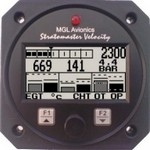QUOTE(ww914 @ Mar 14 2012, 11:34 AM)

Hey Rich
Your post is very timely with me putting the engine back in my car. A couple of questions: The A/C Spruce website shows a spark plug probe and a 14mm probe. Does the 14mm probe go where the existng probe is in the head or do you buy the spark plug one. The third one looks like an egt probe.
(Edit) I think, after doing a little more research, I answered my own question. The 14mm dimension is the size of the spark plug, right. Also, do you think it would be worth it to buy the dual guage to read both head temperatures? Not sure we need egt info like you would on a Lycoming engine, right? That might be going a little too far. I do notice that Chris sells these things. Probably wouldn't hurt on a race car though.
Thanks, Warren
Warren,
Read J
ake Raby's discussion of cyl head temps on this site. My summary and opinions below:
"Cyl Head Temp" is a bit of a misnomer because the temperature of the head varies greatly with location. The best place to measure head temperature is under the spark plug, which, as you point out, is why the 14mm ring terminal (0r 12mm if you've had them welded and tapped) is the probe of choice. So, to properly measure the cylinder heads, you'd need 4 channels of measurement (assuming you're running a 4 cyl)...although #2 is hotter than #4, so if you went for 2 channels, those would be the 2 I'd chose.
The hottest location across both cylinder heads is under the #3 spark plug, so if you're only going to run one channel (like me), this is the place to put the probe. The location of the #3 cylinder combined with the stock cooling arrangement dictates this (Foley's and Raby's horizontal cooling systems are designed to correct this deficiency and deliver much more even cooling across all cylinders).
Measuring individual "spark plug" CHTs and measuring EGT at all is probably only necessary if you're racing your car -- running it up by the redline for extended periods. A race engine may have the ability to more easily adjust the tune of each individual cylinder.
Again, the above is just my opinion based on my limited experience on the street and what I've read. Chris, Jake and others may chime in with professional opinions.

